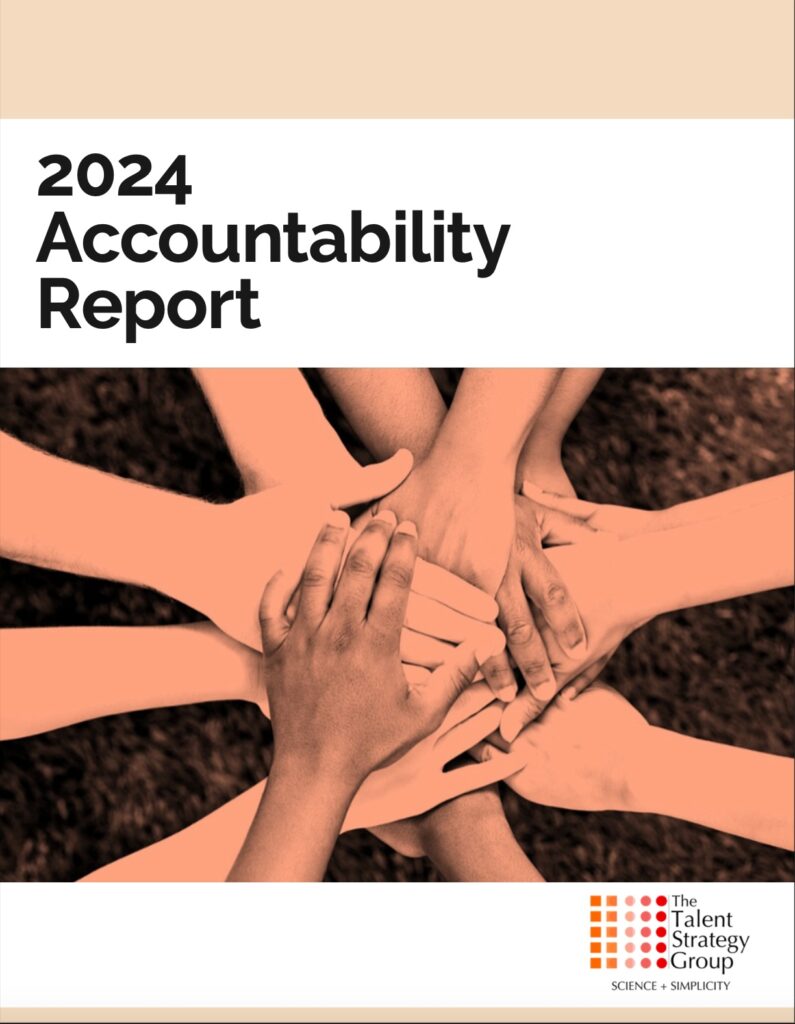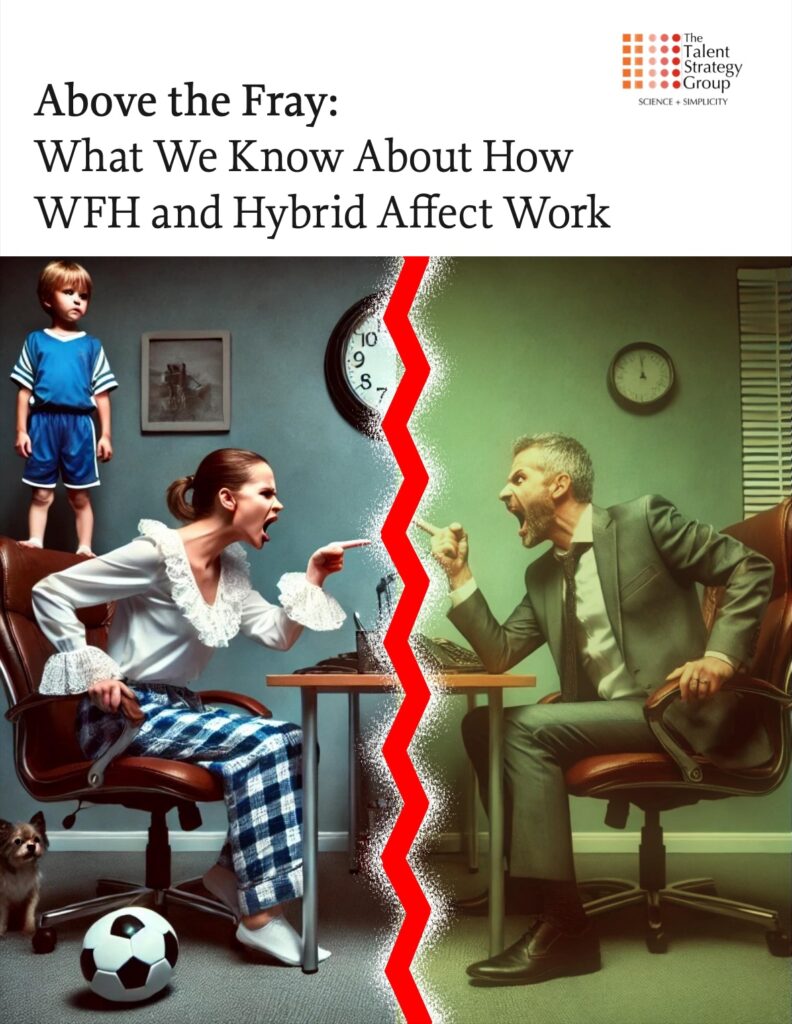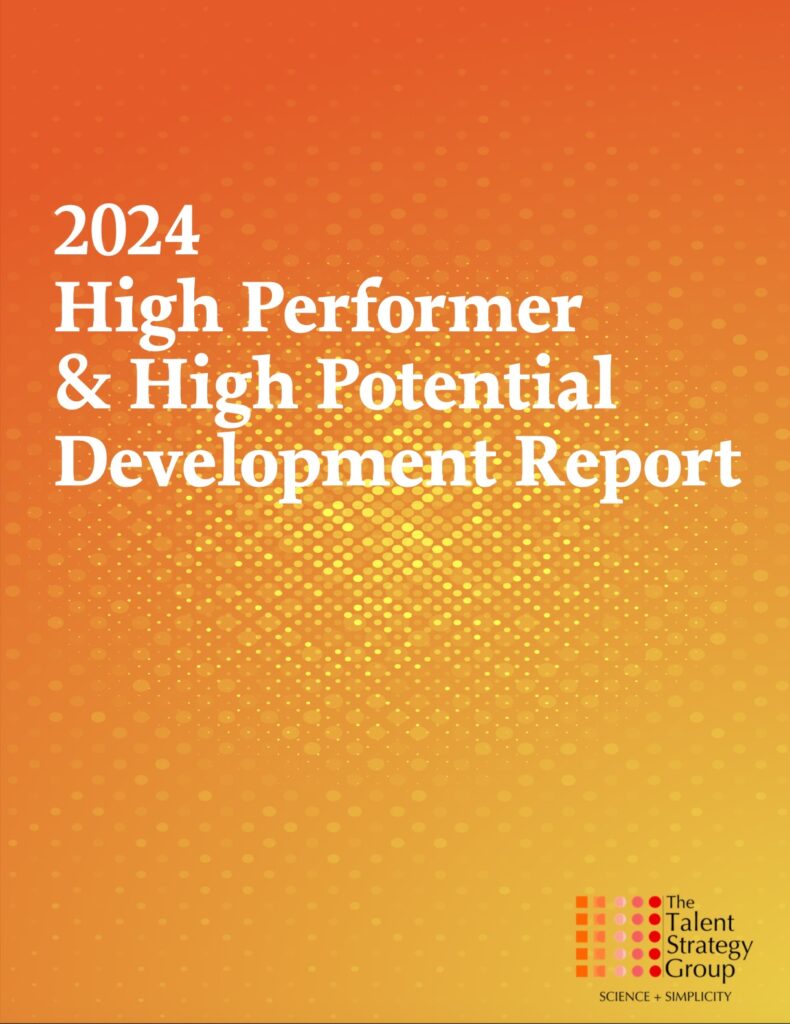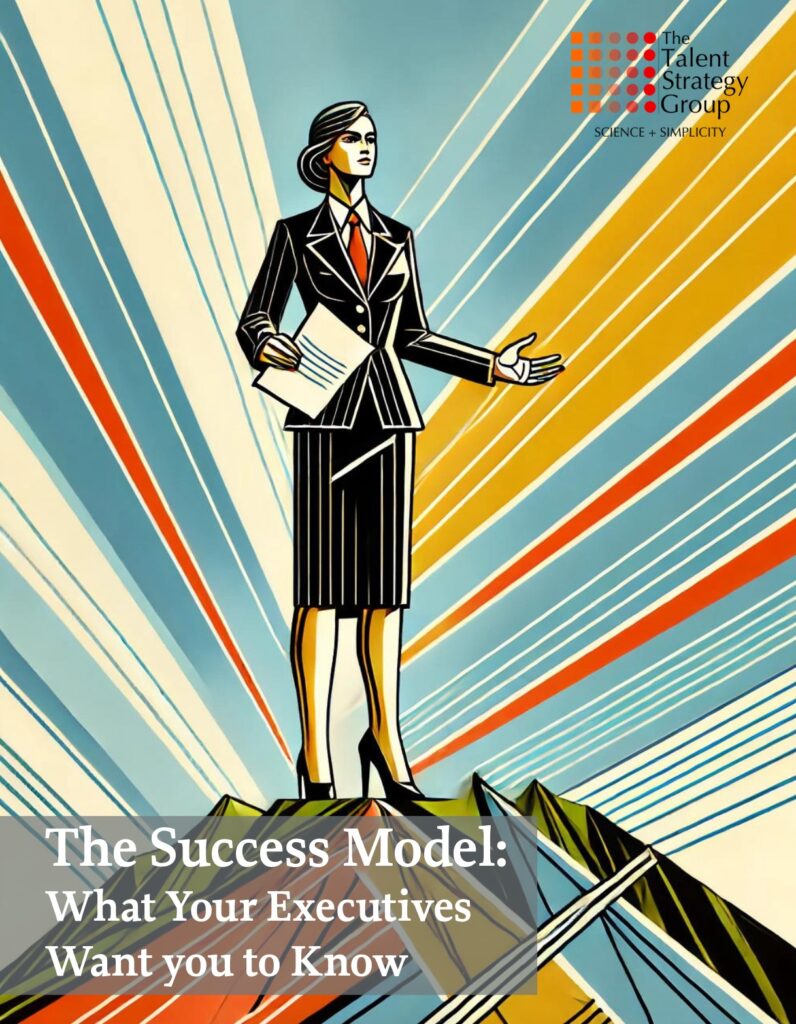Please enter your email in order to download this publication.
We wrote the original version of “It’s the Mortar not the Bricks” in 2019 responding to a plethora of alternative HR operating models flooding into the marketplace. Our experience told us that it wasn’t HR’s operating model that was interfering in HR’s success. It was HR’s inability to operationalize their operating model.
Since that time, we’ve heard even more calls to radically change HR’s operating model but have seen few companies address the fundamental gaps that cause the model to fail. Our fully updated article describes the state of the HR operating model and offers specific advice about how to structure, upskill, and “wire”1 your HR operating model for success.
1 “Wire” or “wiring” as we use it in this article refers to the defined flow of an HR process and the clear, agreed-upon accountabilities within HR for each step in a process.
How we got here
Our field moved from Personnel to Human Resources in 1997 when Dave Ulrich published his classic book Human Resource Champions. The book described a world that was foreign to most organizations and that included strategic business partners, centers of excellence and a shared service center.
There are two valuable things to remember about Dave’s original model. First, it was a description of an ideal future state. Those who today describe it as an “old school” model ignore that Dave’s book fired the starter’s pistol. Organizations still had to run the race and many didn’t start for decades after that.
Second, while Dave’s tripartite model became the reference standard for HR organization design, many more organizations implemented the physical structure than successfully operationalized the model.
While it’s always fair to ask if HR should update its operating model, the answer must include a compelling reason to do so and a clearly better model to move to. We should also ask if the problems we see are due to the model’s structure or its application.
Where We Are
We find ourselves today with a large number of HR operating models being proposed by consulting firms. We see a few challenges with those models:
- The world of work remains the same: Many consulting firms begin their HR operating model pitch with a version of “everything in the world of work has changed therefore your HR operating model needs to change as well.” While there are certainly interesting new variables in HR, especially the world of AI (more on that later), the world of work actually hasn’t changed much.
There are still organizations, hierarchies, jobs, defined tasks, organizational politics, business strategies, profits to be made, a lot of hard-working people and some less hard-working people. Change is not occurring more dramatically or faster than it did moving from manual systems to computers or from computers to the Internet.
“The world is changing” is a wonderful sales pitch but nothing else. Therefore, there’s no compelling reason to radically restructure your HR operating model because a consulting firm declares that the world’s upside-down.
- Not alternatives, derivatives: Consulting firms continue to push supposedly alternative HR operating models while declaring the Ulrich model dead.i As we showed in our original article and summarize again below, these alternative models are simply derivatives of the Ulrich model – a strong back end (a service center), a responsive front end (HR business partners) and specialized resources in technical areas (centers of excellence).
While some of the graphics describing those operating models resemble modern art, that’s the only modern thing about them.
- Changes where it matters least: Companies continue to adjust their HR operating model as shown in our 2023 research below, with nearly 2/3rds doing so in just the past two years. Our experience is that those changes are mainly structural and don’t address the core reasons that HR operating models fail – poor wiring and HR capabilities.ii
What the consulting firms propose
Many of the major consulting firms have their own bespoke version of an HR operating model. We describe each below and show where they align with the Ulrich model.
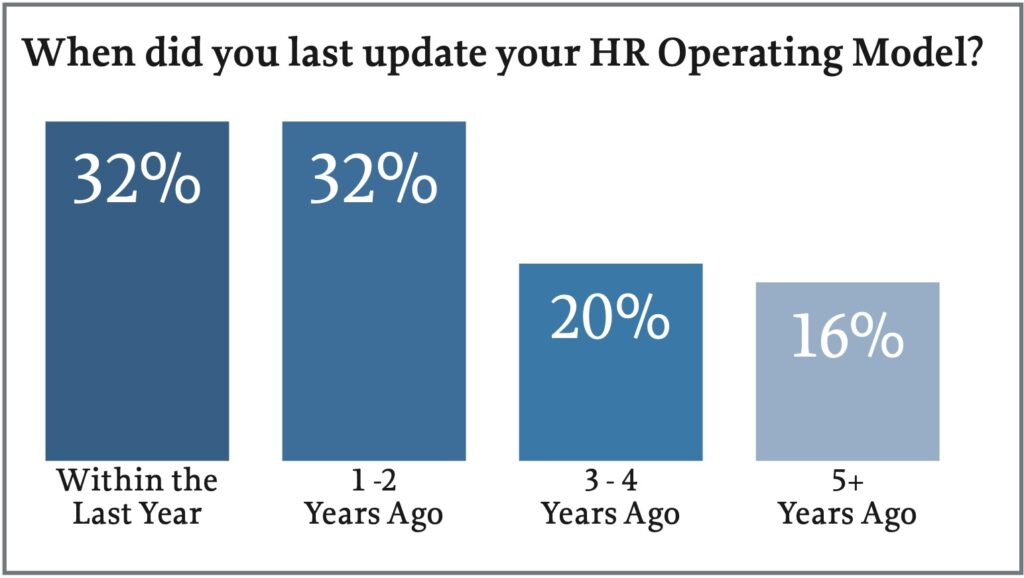
All the models have two common intentions – a more strategic and consultative HR role and a highly efficient technology-enabled approach to service. We fully support that mindset but question why a new HR operating model is needed to make those changes.
Many of the models also devalue or dissolve typical COEs. These groups either aren’t found at all in some models or are replaced by contractors, gig workers and consultants when there’s a need for specialized expertise.
This may be a workable solution if sufficient qualified resources exist to fill those needs on demand. Gig work as a complete substitute for formerly full-time employees remains untested at most companies.
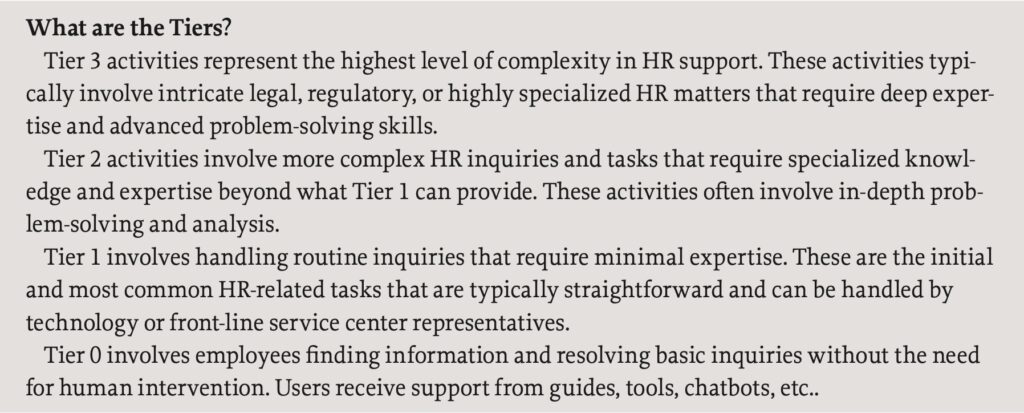
The consulting firm models include:
1. EY: People Value Chain
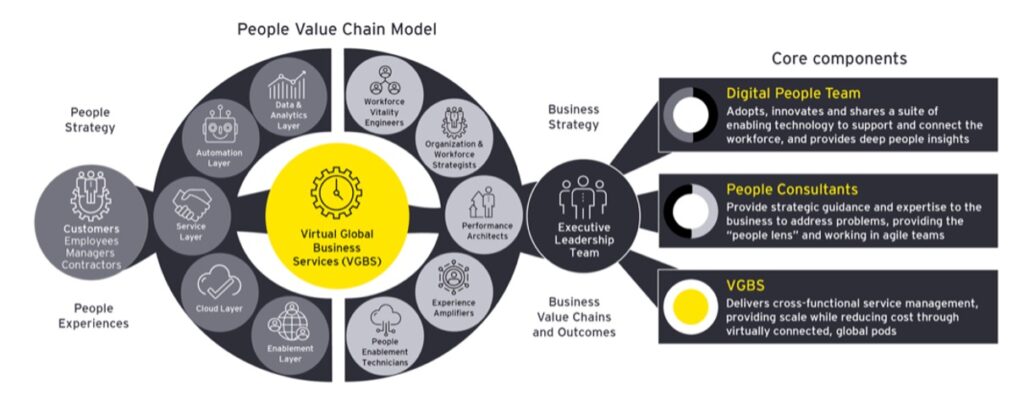
EY’s model splits HR into three parts:
- A Digital People Team that provides core HR services primarily through technology.
- People Consultants who combine former HRBPs and COEs into deployable resources on projects, but with much of the work done by gig workers and consultants. The model contains some interesting roles like “Workplace Vitality Engineers.”
- Virtual Global Business Services that combine work done by HR generalists with the administrative and operational tasks formerly done by COEs.
Fit with Ulrich Model
- Both the Digital People Team and the Virtual Global Business Services (VGBS) groups sound like shared services or HR operations. The Digital team would provide answers through electronic tools, making Tier 0 support better, and the VGBS sounds like Tier 2 support, just delivered from anywhere.
- The deployable People Consultants are HRBPs and COEs, but how work is allocated and organized between these groups isn’t specified, which seems highly problematic given the traditional conflicts between those two groups.
2. Deloitte People Product Operating Model

This new model features three elements organized around the concept that HR should deliver customized “products” to ensure flexibility and impact.
- People Product Development and Operations: This group is the heart of Deloitte’s model, developing and deploying solutions to the organization through technology. This group is modeled on technology development organizations that create and update products.
- Leader Advisory works with executives as “account executives” to broker and organize services between leaders and the People Product Development and Operations group.
- People Support would be the place for what most would call Tier 2 inquiries and dedicated support for processes not yet digitized.
Fit with Ulrich Model
- People Product Development and Operations, and People Support, are Shared Services/HR Operations groups, just divided into a more tech-heavy and less tech-heavy set of roles. This group may include all the COEs, whose role would be to develop “products” for the organization.
- Leader Advisory is HRBPs with a new name.
3. Gartner’s HR Operating Model of the Future
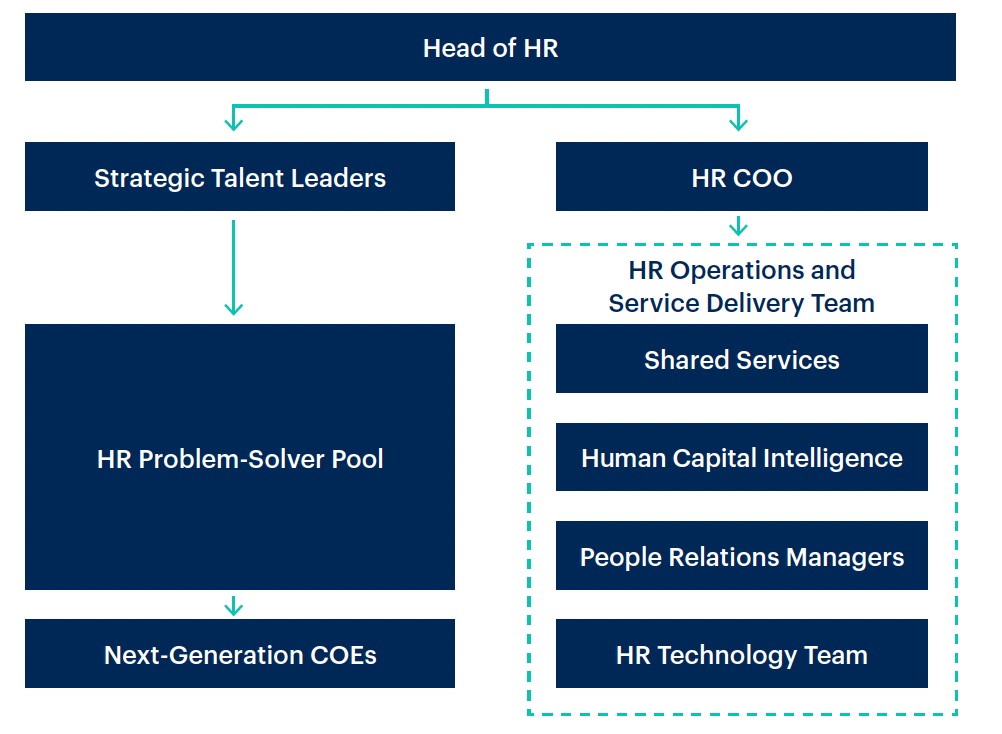
Gartner’s model hews very closely to the classic Ulrich design, with specialization based on back-end or front-end delivery focus.
- Strategic Talent Leaders are the “de facto CHRO” for a business unit or group.
- HR Problem Solving Pool is a deployable resource group of specialists who “apply project management and critical thinking skills to short-term HR-related priorities.”
- Next-Generation COEs are leaner COEs that rely on contractors and consultants as needed for deep expertise.
- HR Operations and Service Delivery Team does what you’d expect from a Shared Services/HR Ops group – people relations, HR tech, etc.
Fit with Ulrich Model
- Strategic Talent Leaders are HRBP’s the way most organizations hope they would operate – consultative with few administrative responsibilities.
- HR Problem-Solver Pool is a new element of flexible, deployable HR leaders not represented in the classic Ulrich model.
- Next generation COE’s serve the role of traditional COEs but without deep expertise and/or who rely on external experts for technical answers.
- HR Operations and Service Team is just classic shared services.
4. Mercer Target Interaction Model
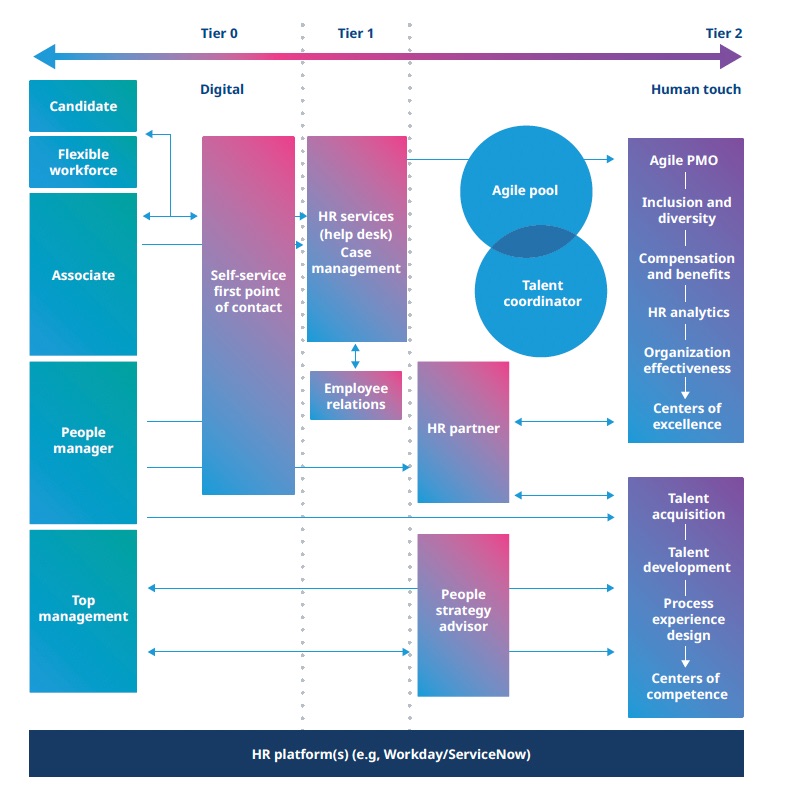
Mercer proposes a Target Interaction Model rather than a Target Operating Model. As implied by its name, a TIM doesn’t prescribe an exact design but Mercer provides an example below of an “exemplary” model. It’s very much the Ulrich model, with a few new names assigned to traditional roles.
Needs for everyone but “top management” are provided in traditional Tier 0 – 3 structures:
- Self-service provides basic answers at Tier 0.
- A help desk and employee relations provide answers to Tier 1 questions.
- An “agile pool” and “talent coordinator” work with COE’s to provide answers to employees.
- HR Partners provide advice to people managers, supported by Centers of Excellence and Centers of Competence. Centers of Competence deliver HR services in specific geographies or business lines.
Top management is served by People Strategy Advisors who interact with Centers of Competence.
Fit with Ulrich Model
- Help Desk and Employee Relations are Service Center employees.
- Agile pool workers and talent coordinators are Tier 2 service center support and the lower tier of HRBPs or HR Generalists.
- HR Partners are more senior HRBPs.
- HR Strategy Advisors are senior HRBPs.
- Centers of Excellence are the exact same as described in the Ulrich model.
- Centers of Competence are today’s regional or BU-focused COE arms – regional talent leader, etc.
5. McKinsey
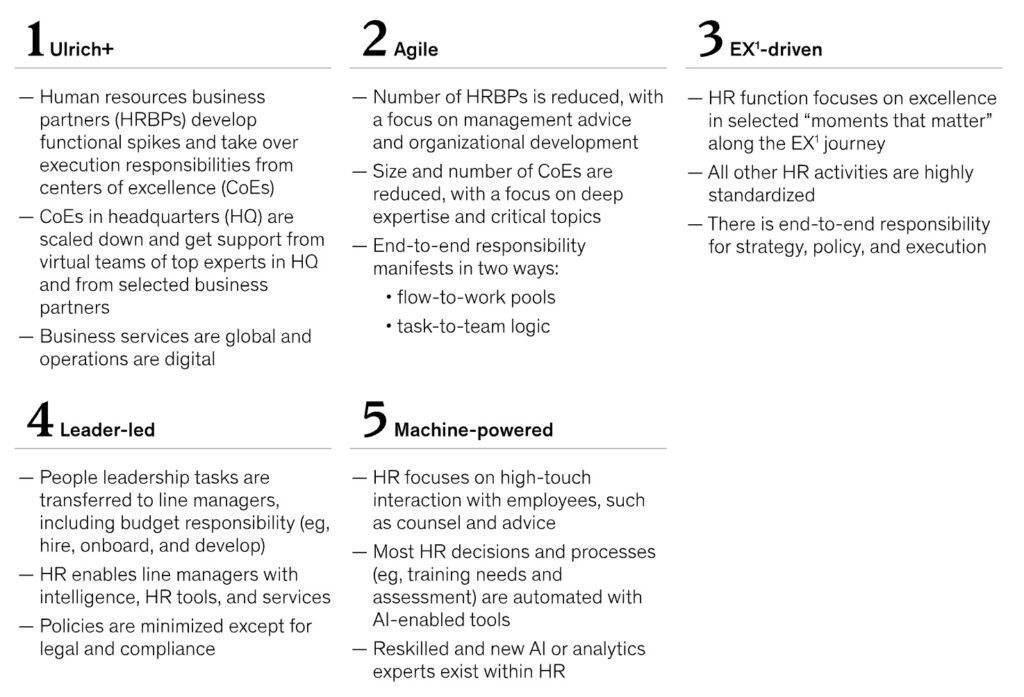
McKinsey doesn’t offer an HR operating model but rather categorizes the current set of HR operating options into five types:
- Ulrich: The classic model we describe earlier.
- Agile: Essentially Ulrich with elevated quality HRBPs and leaner COEs, with more work shifted to shared services.
- EX-driven: The opposite of differentiated or flexible HR, with standard services for everyone and excellence only in “moments that matter.”
- Leader-led: You might call this the non-HR operating model, since line managers do everything and HR only provides tools and data to enable them.
- Machine-powered: Technology provides most HR services with “counsel and advice” provided by HR team members.
In the article describing these models, McKinsey reports that they surveyed 140 HR leaders about which model best represented their company’s current model. It’s telling that an overwhelming majority of respondents selected #1 or #2 – both essentially the Ulrich model.
Our Advice – Structure, Wiring and Capabilities
We’re transparent that we believe the Ulrich model to be the reference standard for good HR operating models. The tripartite model separates HR into the same types of areas as any other function.
There is a group focused on efficiency and standardized processes – a service center or HR operations group. There is a customer-facing group that lines up against key business units or geographies – HR business partners. There are advice-providing experts in the core areas of the function – talent management, talent acquisition, employee relations, analytics, etc. – centers of expertise.
As we describe above, the consulting firms’ proposed operating models mainly include these same parts. Many have moved or combined them and most include a far more robust technology group. The only new areas suggested are deployable consulting organizations or serving the company purely through “products.”
We acknowledge that many organizations using the Ulrich model have not operationalized it for maximum effect. We provide advice below for how to optimize the structure, wiring and capabilities of the model to deliver outstanding results.
Our Advice: Structure
HR Business Partners: It’s surprising that the ratio of HRBP support intensity is still at such high levels. Our latest HR Operating Model report finds there is one HRBP for every 280 employees. There is wide variation in that figure, with 20% of organizations having a ratio of more than 1:400.
We suggest that this high level of support is an accidental, not a purposeful, result of the current HR operating model. We see too many clients who moved halfway into the Ulrich operating model – adding technology and a service center while never radically reducing HRBP and/or generalist numbers.
Like many of the operating models discussed earlier, we believe that HRBP’s should be fewer in number, stronger in capabilities and deployed against major business units and/or geographies. They should be the classic “trusted advisor” and have nearly all their administrative work pushed to a service center. Their clientele should be the senior leaders of the organization (i.e. the top three layers) with other employees served through a service center structure.
We find a mixed reaction to this suggestion among senior HRBP’s. Many want more time to devote to more strategic activities but are unwilling to cede control over local activities and personnel.
Also, as we have written about and discuss again in our capability section below, organizations must recognize that removing administrative burdens does not transform someone into a strategic thinker. The desire for strategic HRBP’s might only be realized by hiring strategic HRBP’s.
We suggest an HRBP ratio of 1:500 can be reached once non-consultative work is pushed to a more highly enabled service center.
Shared services/HR operations: The historical “back end” of HR is where the most exciting innovations can occur. In many cases, this back-end will become the “front end” – the primary way that employees interact with HR.
This doesn’t require restructuring the HR service center, simply enabling it to serve customers in a different way. We suggest a radically different resourcing model for this group in the Capabilities section below.
- Pushing down the work: The future HR service center will perform a far larger percentage of overall HR work and do at least 80% of this through technology. In most cases, this means enabling employees and people managers to get answers through chat bots and other customized and interactive technology.
Creating a customer-focused, easy-to-use and highly efficiency service center starts with a mindset, however, not with technology. That mindset is that all work in the organization should be pushed down to the lowest possible level at which it can be done. Every HR employee’s role must include continually finding and implementing efficiencies.
Our experience is that it’s very difficult to get HR teams to aggressively pursue this efficiency push. There’s the very human challenge of eliminating work that you do and recognizing that some things you enjoy or that make you feel valuable can be done better by technology. The tendency will be to either not fully consider every element of their roles or to consciously decide to declare some work impossible to push down.
To make this happen, we suggest your CHRO must start an initiative in the next three months to identify which activities should be pushed to the service center. I suggest that this will be a slow exercise unless aggressively driven by headcount reduction goals. Team members need to understand that there will HRBP and COE headcount reductions of 20% to 40% over the next few years. There will be a team (internal and external) to help them identify every opportunity to push work to a technology enabled and well-staffed service center.
- The tech: Any article citing technology will soon be outdated, so rather than cite specific tech we’ll say that the AI revolution will bring significant changes and improve HR’s ability to serve our clients. Resume screening, goal setting, tracking and reminding managers about people tasks, creating scripts for tough conversations, predicting potential based on thousands of data points – no area will be left untouched.
This means that fewer staff will be needed if we have shifted large portions of their work to technology. Any staff answering Tier 1 questions need to be redeployed or let go. HR tech team members may need to be added but ideally can be staffed through the IT department since many functions will have similar needs.
- Tier 2 work: Some Tier 2 work (i.e. answering more sophisticated queries, select employee relations work) will need to remain handled by humans, but a large percentage should be done by technology. Again, significant headcount reductions should be realized in this area.
Centers of Excellence: We mentioned that many of the suggested HR operating models dissolve COEs into other areas or subsume them under new structures in. It’s fair to consider different ways to bring specialized resources to bear on HR needs.
Let start with a simple definition of the COE role: Create the “right” answer for sub-function policies and processes based on deep technical expertise and thorough knowledge of the organization.
Deep expertise is relatively easy to purchase externally. Big consulting firms, boutiques and sole practitioners all provide different levels of sophistication and experience. Firms will pay far more to rent these resources than to hire a COE VP. But, if you only need those insights and advice occasionally, the financial equation might work in your favor.
The thorough knowledge of the organization is where outsourcing expertise is challenging. While a process like performance management may have similar parts in all organizations, the nuances of individual cultures, proclivities of CEOs and CHROs, leader capabilities, etc. make it critical to understand how to make the process work in an organization.
We recommend a classic but updated COE approach that follows the Ulrich model. It has a lean structure enabled by the service center design described above. A lean team of deep experts at headquarters is supported through regional or BU-focused team members. The headquarters team provides traditional COE support – sub-function strategy, technical expertise, process design, and senior level counsel and service on relevant issues.
Regional or BU-focused team members can be more leanly staffed than today (if they exist), and are accountable for effective local execution, training and senior level counsel and support within the region or BU.
Our Advice: Wiring HR
Our classic article HR vs. HR describes the age-old battle between HR specialists and generalists, headquarters and region staff, and every other possible division in our field. These battles for what my colleague Jim Shanley calls “power, turf and control” are the natural outcome of humans with different agendas acting like humans with different agendas.
We’d suggest that not addressing this issue is the primary reason that HR operating models fail to deliver. Even if you have a terrible HR operating model, a unified and aligned HR team can make it function reasonably well. But a theoretically perfect operating model without alignment and wiring will never perform to expectations.
This is why it’s naïve to propose new models without addressing this fundamental challenge.
Wiring means the agreement among HR team members about how vital processes will flow – the steps, the accountabilities, the technology, etc. As basic as this sounds, it is rare to find an organization among our esteemed client group that has purposefully wired their HR organization.
In too many companies we see CHROs assuming that processes are already working well or saying that their team members should “figure it out.”
What to do
Create an “HR Wiring Team” to assess where the HR wiring is either not fully developed or isn’t being followed. The objective of this team is to fully wire the identified areas and ensure successful implementation.
- Step 1. Assign a project leader: You can do this internally with a high potential HR leader heading this team or hire a consulting firm to perform the work. Even if you hire a consulting firm, there still needs to be an internal champion.
- Step 2. Survey/interview to ID potential wiring issues: Conduct a survey and/or interview HR leaders at all levels to identify areas where HR is not effectively working with HR. Synthesize that list into major process or product areas to clarify what needs improvement.
- Step 3. Form an HR Wiring Team: Based both on the insights from Step 1 above, identify a team representing senior HRBPs, COEs and your service center. This needs to be a combination of decision-makers and those with detailed process knowledge. Their charge is to investigate the cause of wiring problems and propose specific solutions.
- Step 4. Diagnose & plan: The HR Wiring Team meets to discuss the identified issues, prioritize those to solve and create the plan to address each one. They should Identify 8 – 10 of the most consequential areas to solve. They should present their findings to the CHRO for input and secure their total support for the project.
- Step 5. Sub-groups meet to solve issues: Sub-groups meet to address each assigned issue. They may gather more data or begin to map and solve the issue. Multiple meetings will be required.
- Step 6. Present findings to CHRO and HRLT: In what’s likely a full-day meeting, the HR Wiring Team will present their findings and conclusions to the HRLT and CHRO. They’ll discuss solutions, contingencies, costs and the specific commitment needed from the HRLT members. The HRLT either commits to themselves and their teams that they will abide by the proposed wiring or they make recommendations for change, which are revisited in a later meeting.
- Step 7. Implement and monitor: After each wiring fix is implemented, a select team of project members should be responsible to monitor and ensure compliance with the process.
This a major project that will take time (4 – 8 months) but will help ensure that your HR operating model is performing as designed. Your CHRO needs to fully sponsor this project and ensure its successful implementation.
Our Advice: Capabilities
HRBP: The HRBP role is supposedly upgraded in the consulting firms’ proposed HR operating models but those proposed upgrades really just bring HRBPs to their originally intended Ulrich model state.
Future HRBPs should boast strong consultative, strategic, business and relationship management capabilities. The work they “roll their sleeves up” to do should be limited to senior team interactions in those areas. They should broker COE, Service Center and external consulting resources to ensure delivery of the HR strategy in their group.
We’ll often describe that standard and ask clients: What percent of your current HRBPs can do this today, can get there with enough education and effort, or can never get there?
If the percentage of those who can do this today and those who can grow into it is less than 40%, you need to decide on your HRBP build or buy strategy. The assumption is that about 2/3rds of today’s HRBPs will move to a service center environment or be let go. You need at least 40% who are great today to ensure you have the flexibility to staff HRBP roles as you prefer.
Service Center/HR Operations: We discussed earlier that this group needs significant investment to digitize, transform and serve your organization as the foundation of all interactions. We think the best way to do this is to outsource as much of this group as possible.
The constant changes in HR technology and increasing sophistication of technology in general mean a never-ending, costly battle to stay current. The specialized skills required to build and customize large language models to provide appropriately personalized recommendations and knowledge management will be easier to rent than to buy.
Most companies won’t have the sophistication to develop a conversational AI system that serves as your company’s HR backbone. The human resources needed to do this will remain expensive in the near future.
Any element of HR technology than can be outsourced, either to your company’s IT group as a service provider or to external firms, should be outsourced.
What should remain in the Service Center are Tier 2 HRBPs who can answer more sophisticated questions than the technology currently can, to conduct investigations, etc. These HRBPs are likely already well-skilled in those areas so we see only supplementary capability-building needed with that group.
COE’s: If the COEs are leaned-out with only deep specialists remaining, we see capability-building consisting of elevating strategy, influencing and implementation skills.
We see relatively solid technical knowledge in the thousands of COE leaders we’ve taught at the Talent Management Institute over the years. What the data from their 4+2 360s shows is that their colleagues want them to better understand the business and better influence senior leaders on important COE topics.
Those skills are very trainable but require that the COE leaders want to demonstrate those skills rather than focus on optimizing process and program design. Influencing ability and business knowledge go hand-in-hand, since those who know their business extraordinarily well can build a more compelling case and realistic plan for their COE proposals.
Why else HR Operating Models aren’t working
We’ve called out wiring, capabilities, and structure as elements getting in the way of HR operating model effectiveness. But there are plenty of reasons adjacent to the operating model that are also barriers.
- CHROs not gutsy enough to make tough decisions: Some CHROs are not willing to drive significant change in reducing headcount, upgrading the capabilities of their team or holding their HRLT accountable to “wire” the business properly.
We’ve seen a number of half-implemented models where work remains in the business that should’ve been eliminated or shifted to the service center. At one recent client, a prior HR re-organization that should have eliminated 100 HR team members instead added 20.
- Not forcing the business to use the model: The only challenge with employee self-service is that no employee is interested in self-service. Leaders are especially not interested in it and the sense of privilege only grows as you move up the hierarchy.
Your CHRO needs to decide where she or he will draw the line at who is allowed to avoid self-service. If you’ve made your processes and technology simple to use, leaders should have few excuses to not use it. If those processes and technology are truly time wasting, it’s up to HR to redesign those processes before asking people to invest time inefficiently.
- HRBPs hold onto work: It’s all too common to hear that HRBP’s are still doing work that should’ve been moved to a service center. We hear excuses ranging from “I only do it for a few people” to “I just don’t trust that other people will do this well.” No matter the excuse, when work isn’t stripped away from them, HRBP’s have less time to focus on the far more important strategic and consultative tasks.
- Too many resources: This excuse may shock the majority of HR teams that are unbelievably lean and struggling just deliver to basic services. However, we know many HR groups that have extraordinarily high HR to employee ratios. Those high ratios cover waste and inefficiencies with ease. Their CHROs (perhaps like those in the first bullet) make up for inefficient models by hiring more bodies, and those bodies deliver the basic services well so leaders don’t complain and improvements aren’t demanded.
- Confusing HR technology for an HR operating model: It’s easy to be sold a bill of goods by consulting firms and technology vendors who pretend that technology is the infrastructure for your operating model. That is incorrect. Your HR practices are the infrastructure for your operating model, and the technology simply supports the transactions and the storage of information.
The literal wiring of HR technology does not replace the need for wiring of how the live human beings in your HR group work well together.
Let’s Get to Work
The effectiveness of your HR operating model will largely dictate the effectiveness of your HR team. The Ulrich model is a very reasonable choice if you bring it to life with the guidance we provide above.
In a profession where novelty is sometimes valued over disciplined execution of the fundamentals, it’s especially important to ignore the pervasive calls of consultants to change for change’s sake.
References
- https://joshbersin.com/2023/03/redesigning-hr-an-operating-system-not-an-operating-model/
- https://talentstrategygroup.com/hr-operating-model-report-2023/
